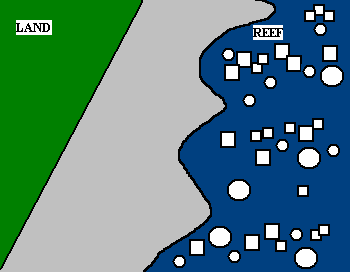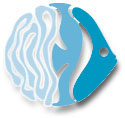| ABM of Coral Diseases Epidemiological computer models have classically consisted
of portions of the population, or �compartments,� that are grouped according
to general categories such as infected, susceptible, and immune. These classic
models make many assumptions about the population in question including that the
compartments are composed of completely homogenous groups of individuals. The
real world is not as simple, and individuals have varying rates of
susceptibility and recovery.� Here,
the advantage of agent-based models becomes important most especially in the
context of a coral reef.� Most of
the diseases affecting reefs today are found to afflict more than just one
species. Life history characteristics are variable across coral species that could have a considerable influence on their subsequent rates of susceptibility
and recovery.� In a classical
epidemiological model, differences are ignored while an agent-based model
incorporates variability into individuals.�
Initially, the model will be developed with existing information. Through
the construction of the model, key information that is lacking will be
identified and can then be collected through field studies. The information
gained through this field study can then be used to help calibrate the
model. A representation of a hypothetical epizootiological model
of coral disease based on known data and calibrated with field data is shown in
Figure 1.
�

Figure 1. A simulated example
of a hypothetical reef consisting of four different�
species.
Figure
1 is consistent
with the nature of an agent-based model, all of the individual coral heads would
contain differing life history, susceptibility, and recovery rates depending on
their species and history.� More
consistent with a real reef, this �mock-reef� contains a heterogeneous
collection of coral colonies. �A coral disease could be introduced that
infects first one coral. Diseased corals are represented by red individuals and
changes represent the progression of the disease through the coral reef
ecosystem. Corals that have experienced total mortality are taken
out of the system (represented by the empty containers) while corals that have
experienced recovery remain alive (orange individuals).
...top |
 NCORE
NCORE